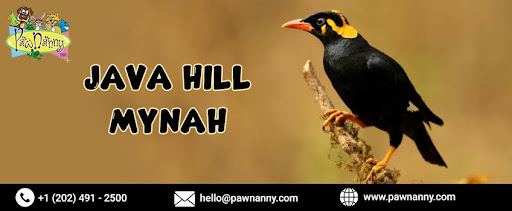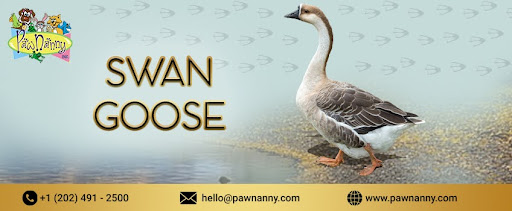
Java Hill Mynah
Scientific Name: Gracula Religiosa
Flock Members: 2-100 members
Size: 9-12 inches
Weight: 120-140 grams
Hypoallergenic: No
Lifespan: 12-15 years
Behavior
Java Hill Mynahs are social birds, entertaining, cheerful, and good-natured and thus preferred as pets and lined up by bird lovers. These birds are very intelligent and can show a spectrum of behaviors which range from the most basic. One of the most noticeable things about the Java Hill Mynahs is that they are very vocal birds. They can imitate different sounds and calls, such as those of people, other birds, and mechanical sounds, even during the Pet Transportation Service. Their vocal sounds are not just imitative, the ability could be trained to address a specific sound at an appropriate moment to ask for attention, signal danger, or announce hunger.
Java Hill Mynahs are called sociable birds in their habitat areas because they are usually found in groups of several hundred. They show good affiliation with their flock members; they preen at each other, play with each other as well as perform cooperative breeding activities. Being pets, they are affectionate towards people in their care and have preferred customer-like engagement with them. Java Hill Mynahs are not very shy birds, always active, and always fly around looking for something new to peck on. Toys, puzzles, and enhancements should be available to them to exercise their brains to avoid boredom. Although it is a social bird, it can be not very nice, particularly if the breeding season contains or defends a territory containing food or appropriate nesting sites. Socialization and training all through the early years may help control such behaviors.
History
The Java Hill Mynah, otherwise called the Hill Myna or Gracula religiosa, is a colorful bird endemic to South and South East Asia. Their involvement with different cultures and societies is almost as old as the regions actively populated by those creatures. The Java Hill Mynah was first reported by Carl Linnaeus in 1758 and is known for its amazing skills in mimicking voices. And has shiny black feathers and a bright yellow or orange fluttering skin around its eyes. Historically, these birds preferred to nest in forested zones and wooded landscapes - these areas were also hilly or mountainous for the most part, hence the bird's name: the Hill Myna.
The Java Hill Mynahs have been domesticated throughout history to be used as pets, and in some cultures, people take them as a symbol of luck or good fortune. They have been painted and described in the classics of world literature and can be heard in fables and stories. Java Hill Mynahs were particularly common in the colonial period when European bird lovers started to develop an interest in collecting birds. They were sold in Europe and other places as beautiful fashion statements and for their excellence in singing.
Java Hill Mynahs are again widely bred as pets and aviary birds. But because of habitat destruction and capture for trade in the pet market, some species in the Hill Myna are endangered. There are serious attempts to preserve their natural environment and control their commercialization so that many more people may appreciate such fascinating birds in the future.
Breeding
Breeding pairs should be placed in large flight enclosures with several perch sticks, nest boxes, and plants to create an environment close to the species' natural habitat. The aviary needs to have good air circulation and be maintained at a fairly constant temperature, 70-80F being preferred.
Members of the Java Hill Mynahs species are monogamous, meaning the male partner develops a strong bond with the female partner. In the case of choosing the breeding pairs, it is required to choose those that can mate together and reach maturity, which often occurs in birds at the age of two to three. The reproduction period of Java Hill Mynahs is common in the spring and summer. Its final step is to mate and breed - once a compatible pair has been identified and breeding conditions in their tanks predominately environmental are conducive, the female will lay eggs in a clutch that normally averages between two and five. That way, both parents incubate the eggs, which take about 14 to 18 days to hatch.
Looks and Health
The Java Hill Mynah is one of the most beautiful birds. Glossy black plumage with bright yellow or orange patches of skin around the eyes looks graceful for these strong and authoritative birds. The most conspicuous aspect is two white areas on two sides of their head in the middle of feathers that are usually black on mature birds. In addition, they have yellow bills and legs, and this makes the bird distinctively colorful. In flight, the underwing's color is pale, and there is a bright contrast with the bird's black body.
So far as health is concerned, Java Hill Mynahs are reasonably healthy birds if given proper care. But they are totally sensitive to some health complications, for instance, feather plucking, obesity complications, and respiratory infections, if they are not provided with a good environment and balanced diet. The essential needs that should be met are, of course, the physical needs, including having a big cage with enough space to move around, and mental needs, mostly exercised through toys and interaction. These birds require high-quality pellets as the base and should be given various foods such as fresh fruits and vegetables and moderation protein such as boiled eggs or mealworms. They should also have periodic health check-ups via taxi services for pets so that any possible health complications will be detected early.
Food and Nutrition
They feed mainly on fruits, seeds, insects, and small vertebrates in the wild. As pets, their meal should mimic the original environment where they would obtain nutrients. Regarding diet, the Java Hill Mynahs require a proper mix of fresh fruit foods like apples, grapes, bananas, and berries. These fruits supply vitamins and minerals that are important for their well-being. In particular, they need qualitative seeds such as millet, sunflower, and safflower seeds to get the necessary nutrients.
The protein sources are essential to facilitate their feathering as well as muscle-building. Selection of proper feeding and ensuring that Java Hill Mynahs feed on different varieties of foods is key to ensuring they live longer lives in captivity.
Conclusion
Java Hill Mynahs are social birds native to Southeast Asia forests. They live in groups, appear to have a wonderful way of socializing with numerous calls, and even imitate other birds and human beings. Like any other pet bird, Java Hill Mynahs are appreciated for their ability to speak and are full of fun. They are affectionate and attach themselves to their human caretakers. As any trainer will tell you, they can be trained to mimic almost anything from sounds, words, and even phrases. Nevertheless, they need mental and social stimulation to be healthy and happy dogs. Including toys and perches in a big aviary or enclosing a large cage is highly recommended. When given proper care, Java Hill Mynahs are excellent pets, which add happiness to the lives of their families because of their wit and friendly nature. For more information or to avail of our Pet Taxi Services in Fairfax, VA, visit PawNanny.com.










